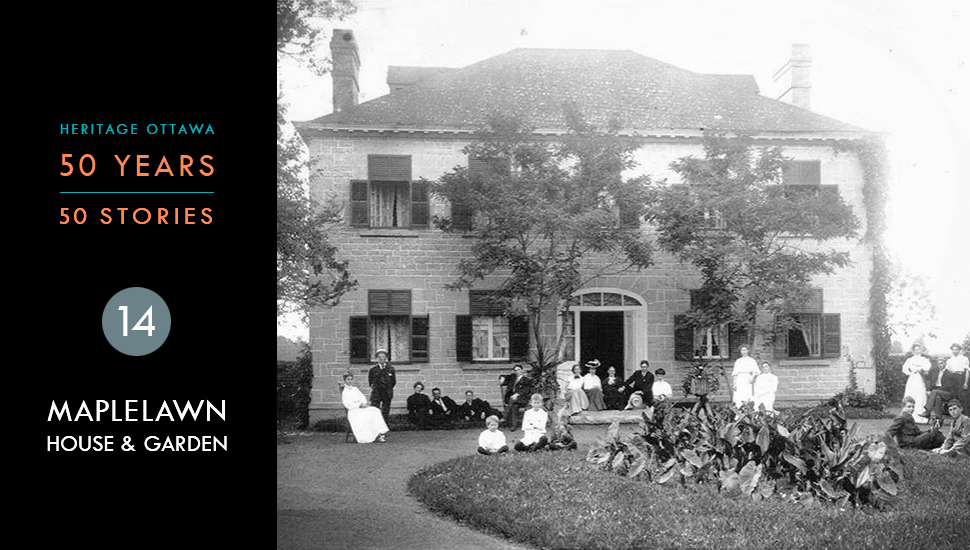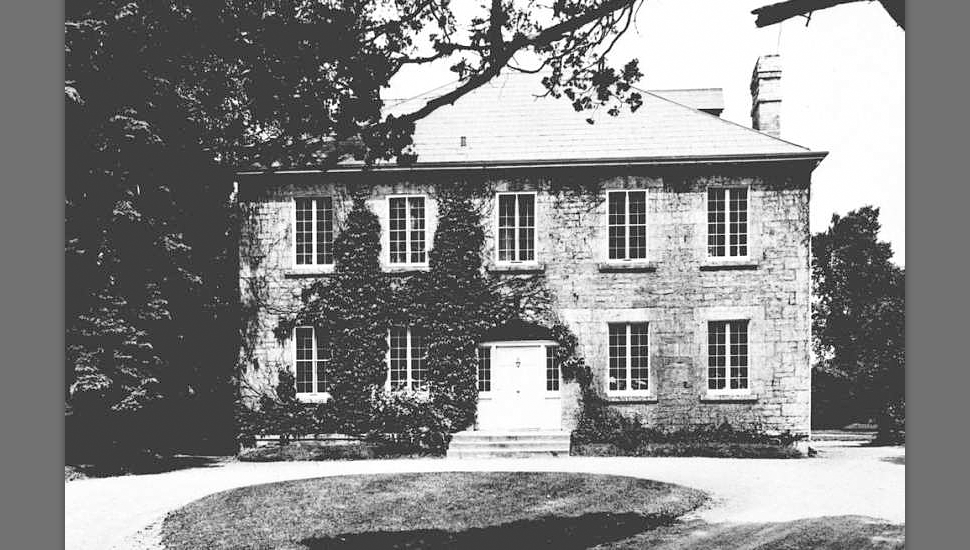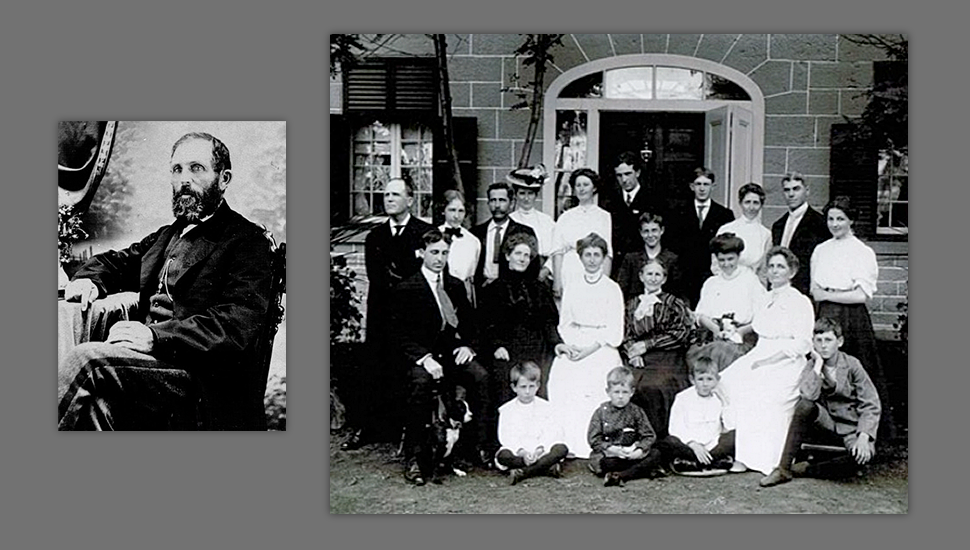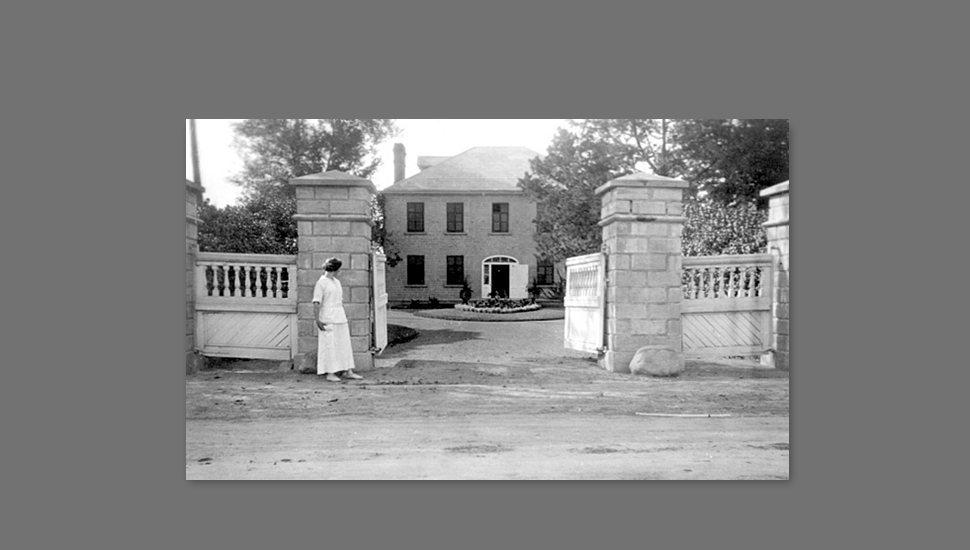14. Maplelawn House and Garden
Constructed: 1831-1834
Architect: Unknown
Location: 529 Richmond Road, Ottawa
Once part of a large prosperous farm on the outskirts of Bytown, today Maplelawn House and Garden is part of the Westboro area of Ottawa. Maplelawn has a long history associated with three important families in the community: the Thomsons, the Coles and the Rochesters.
The 2 ½-storey stone house (1831-1834) was built in the Georgian style for Scottish immigrant William Thomson. The symmetrical five-bay façade included two gateway piers and a dwarf limestone wall with moulded coping across the frontage. Integral to the site was a rectangular kitchen garden of about one acre enclosed on three sides by uncoursed random rubble boundary walls.
Thomas Cole, a successful lumberman, acquired the farm in 1877 and applied himself to dairy farming. He named it the Highland Park Dairy Farm. In 1895 Cole sold the farm to his son John, who, inspired by the arrival of the electric streetcar in 1899, subdivided part of the land into lots for housing and a new school. He also electrified the farm, making it one of the first in Canada to operate electric lights and machinery. John went on to further subdivide the land, creating a new neighbourhood he called Highland Park.
In 1935, Lloyd B. Rochester (related to the Coles through marriage) purchased Maplelawn from the Cole family. As well as adding a new summer kitchen and additional bedrooms, he hired R. Warren Oliver, a Guelph-trained landscape architect working at the Central Experimental Farm, to renew the garden.
Oliver re-envisioned the garden as an ornamental perennial space. Although the fruit and vegetable gardens were turned to lawn, the general layout of the beds, borders and pathways was retained. It was during Lloyd Rochester’s ownership that the house became known as Maplelawn.
In 1952, the Federal District Commission (precursor of the National Capital Commission) purchased the property to ensure its preservation. Frances Rochester, Lloyd’s widow, continued to occupy Maplelawn until 1989.
That same year, Maplelawn and its garden were formally designated a National Historic Site of Canada. The garden was recognized as “the best preserved of the few known surviving examples of early 19th century walled gardens in Canada” and the house for “the quality” of its craftsmanship and its “exceptional” design.
An “as found” survey of the walled garden by landscape architect John J. Stewart revealed that much of Oliver’s plantings had survived in their original location, enabling the NCC to restore the garden to its 1936 design.
With the house vacant since 1989 and the unique garden receiving only basic maintenance, volunteers Ann Faulkner and Nancy Smith formed the Friends of Maplelawn Garden in 1993. The group entered into an agreement with the NCC to study, preserve and rehabilitate the walled garden, making use of such existing perennials as the old peonies that still thrived within its walls.
In 1994, the City of Ottawa designated Maplelawn and Garden under Part IV of the Ontario Heritage Act, comprising one of the few historical landscapes designated in Ottawa. In 1995, elements of the house’s interior were added to the designation.
The NCC leased the vacant Maplelawn house to Peter Fallis in 1995, who carried out extensive interior renovations to accommodate a new café, but several setbacks forced the restaurant into bankruptcy. In 1999 a lease with The Keg restaurant chain created a new franchise called “Keg Manor,” which continues to operate today.
The integrity of Maplelawn House and Garden seemed to be assured until the fall of 2003, when the City of Ottawa sold the surplus Denis Coolican Building next door and its accompanying 3.5-acre site. A proposed six-storey building only 20 metres east of the walled garden and construction of two 24-storey condominium towers to replace the Denis Coolican Building posed a significant threat.
Responding to concerns raised by Heritage Ottawa and the local community, the developer retreated to a more modest development in 2004. The Denis Coolican Building was leased to the Canadian Institute for Health Information and a six-storey retirement residence was built well to the east of Maplelawn House and Garden.
Maplelawn is one of the few surviving estate houses that once lined Richmond Road. Its spectacular walled garden remains a much loved oasis in the city. The garden has been lovingly tended by the Friends of Maplelawn Garden since 1993.





